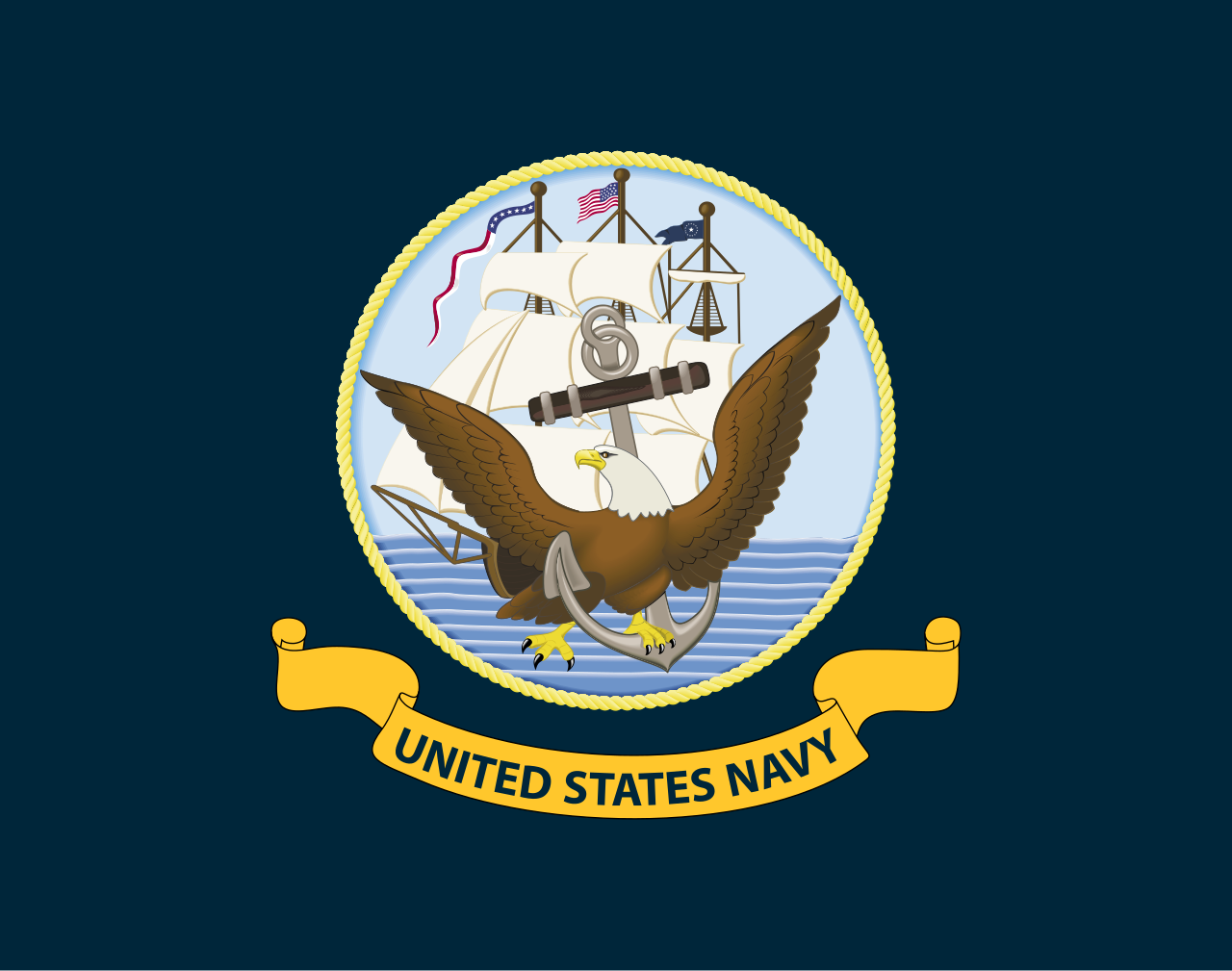- Jul 12, 2018
- 10,251

|
OPERATION ARCHANGEL |
TOP SECRET |

| 
AIR FORCE DEPLOYMENT | 
|
|
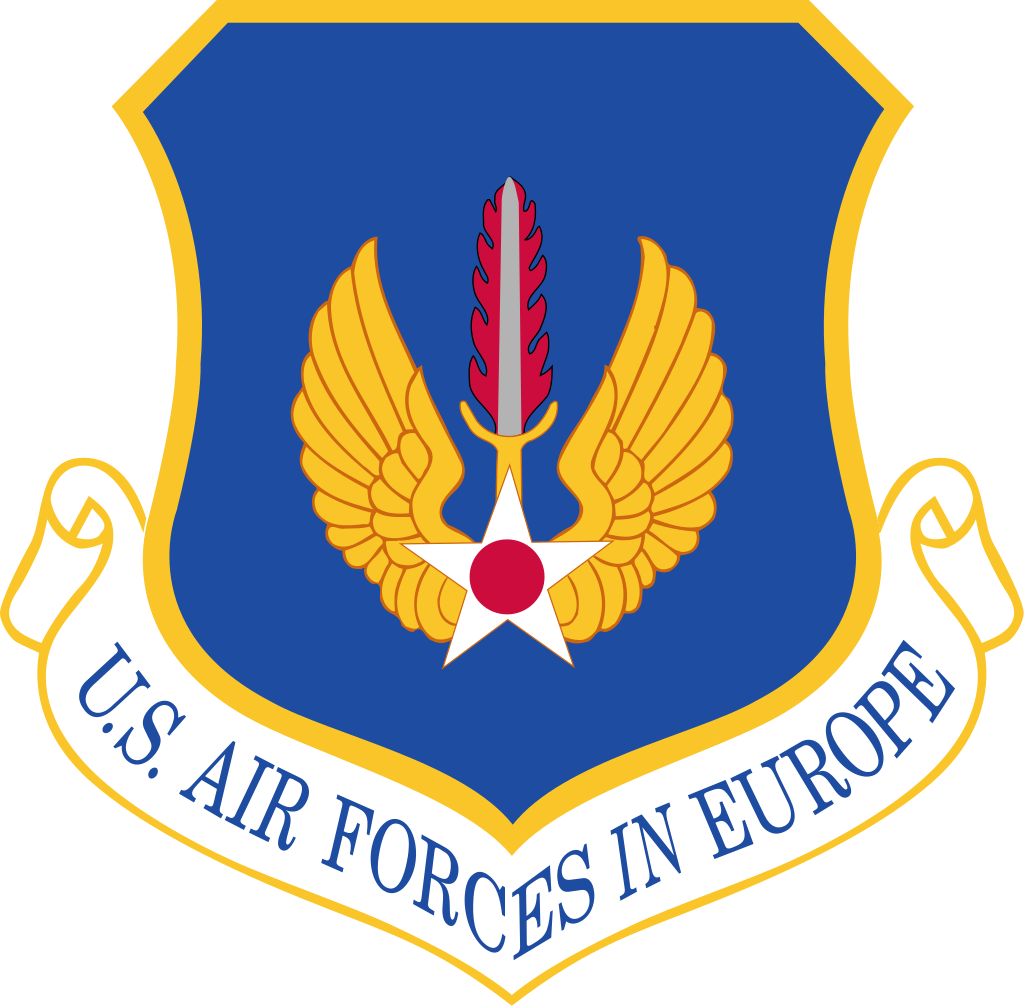
AIR FORCES IN EUROPE
Lieutenant General Alvin Daniels
Lieutenant General Alvin Daniels
| ORDER OF BATTLE | PERSONNEL | GARRISON |
| HQ Support Unit | 150 Personnel | RAF Mildenhall, United Kingdom |

AIR COMBAT COMMAND
| SQUADRON | AIRBASE | AIRCRAFT | PILOTS |
| 6th Fighter Squadron | Hill AFB, Utah | x24 F-15C | 24 |
| 8th Fighter Squadron | Mountain AFB, Utah | x24 F-15E | 24 |
| 9th Fighter Squadron | Seymour Johnson AFB, North Carolina | x24 F-15E | 24 |
| 15th Fighter Squadron | Holloman AFB, New Mexico | x24 F-15C | 24 |
| 1st Reconnaissance Flight | Homey Airport, Nevada | x3 SR-71A | 6 |

MISSILE DEFENSE COMMAND
| ELEMENT | LOCATION | EQUIPMENT OPERATED | AIRMEN |
| 9th Missile Defense Element | McGuire AFB, New Jersey | x1 NASAMS | 10 |
| 11th Missile Defense Element | Fort Bliss, Texas | x1 MIM-104F PAC-3 Patriot Missile System | 10 |
| 12th Missile Defense Element | Fort Hood, Texas | x1 MIM-104F PAC-3 Patriot Missile System | 10 |
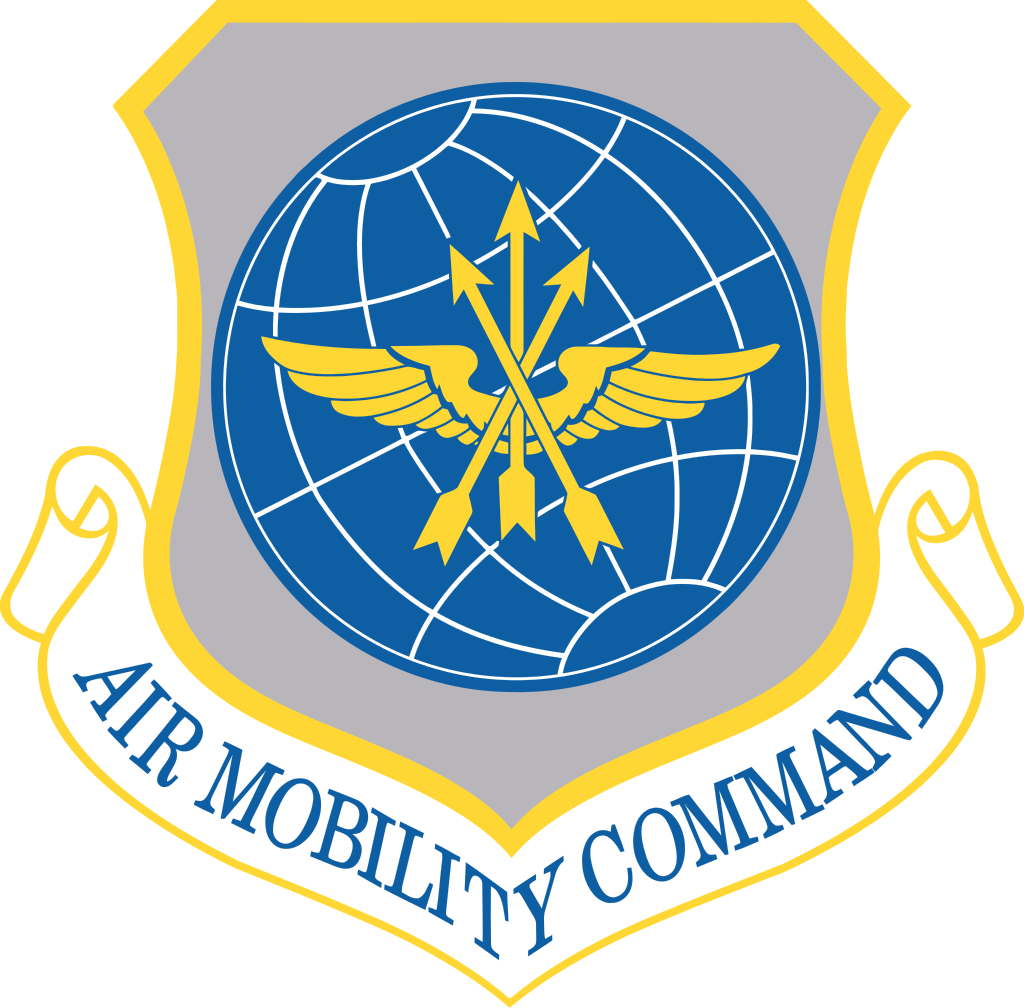
AIR MOBILITY COMMAND
| SQUADRON | AIRBASE | AIRCRAFT | CABIN CREW |
| 1st Air Mobility Squadron | Dover AFB, Delaware | x4 C-5B | 14 |
| 4th Air Mobility Squadron | Ellington AFB, Texas | x12 C-40 | 72 |
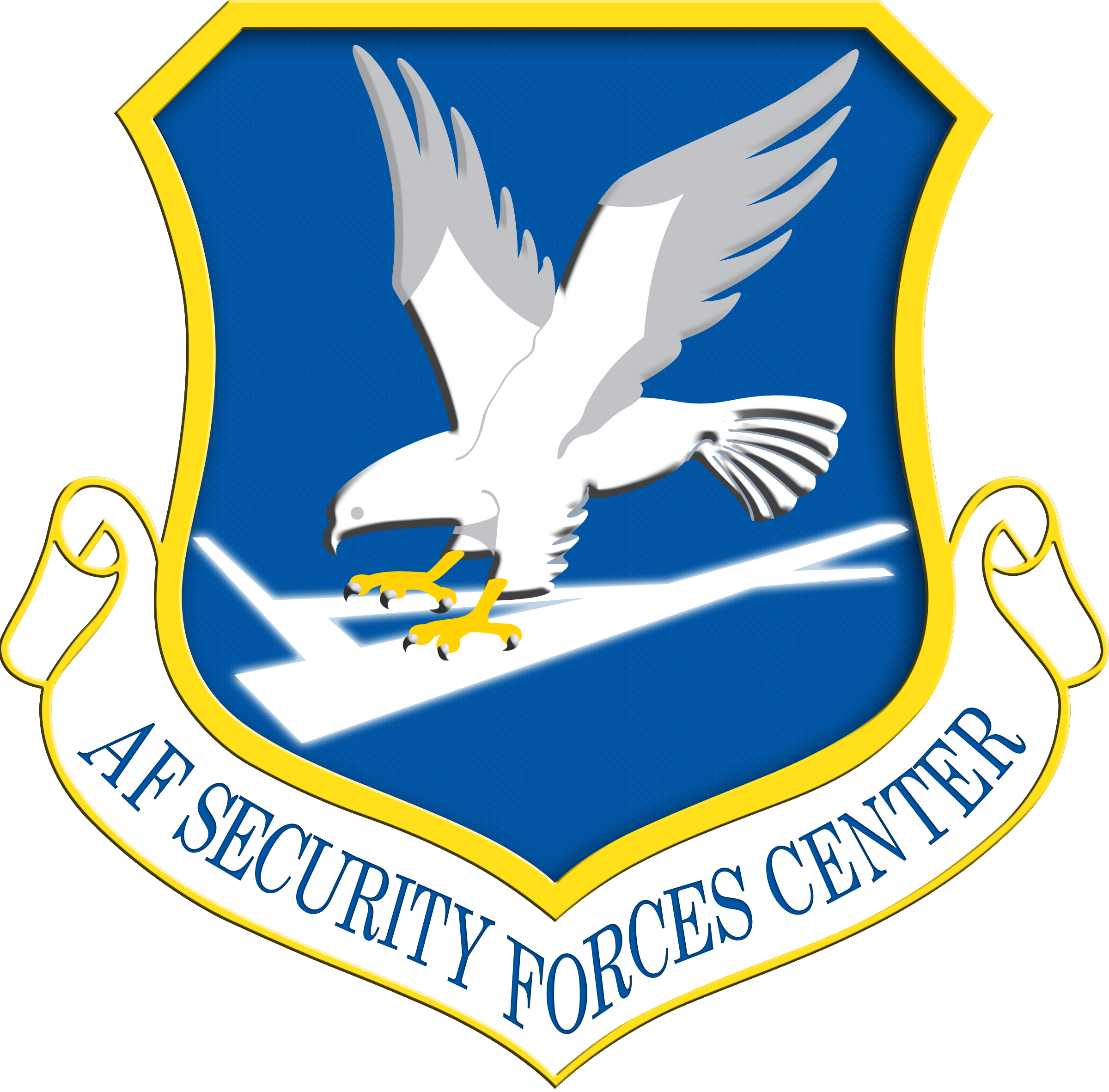
AIR FORCE SECURITY FORCES
| ORDER OF BATTLE | PERSONEL | GARRISON |
| 103rd Security Forces Squadron | 550 | Ellington AFB, Texas |
DETAILS
F-15C Eagle - Fully Fueled; x1 Pilot; Pilot fully rested and uniformed in flight suit; x1 SIG Sauer P226 on person with one loaded 12-round magazine in gun and two additional loaded 12-round magazines; Compass; All necessary maps (terranean and deep-sea topographic maps) and other necessary standard on-board equipment, material, and supplies; Snacks and secured water canister; Full loadout of standard physical and electronic countermeasures for F-15C; x2 conformal fuel tanks; x3 external fuel tanks.
F-15E Strike Eagle - Fully Fueled; x1 Pilot; Pilot fully rested and uniformed in flight suit; x1 SIG Sauer P226 on person with one loaded 12-round magazine in gun and two additional loaded 12-round magazines; Compass; All necessary maps (terranean and deep-sea topographic maps) and other necessary standard on-board equipment, material, and supplies; Snacks and secured water canister; Full loadout of standard physical and electronic countermeasures for F-15E; x2 conformal fuel tanks; x3 external fuel tanks.
C-5B - Fully Fueled; x7 Crew (aircraft commander, pilot, 2 flight engineers, 3 loadmasters) uniformed; Crew fully rested and uniformed; x7 SIG Sauer P226 on person with one loaded 12-round magazine in gun and two additional loaded 12-round magazines; Compass; All necessary maps (terranean, deep-sea topographic maps, and star navigation charts) and other necessary standard on-board equipment, material, and supplies; Snacks and secured water canister; Full loadout of standard physical and electronic countermeasures for C-5B.
C-40 Clipper - x6 Crew (x2 pilots, x1 crew chief, x1 loadmaster, and x2 second loadmasters); Crew fully rested and uniformed; x6 SIG Sauer P226 on person with one loaded 12-round magazine in gun and two additional loaded 12-round magazines; Compass; All necessary maps (terranean, deep-sea topographic maps, and star navigation charts) and other necessary standard on-board equipment, material, and supplies; Snacks and secured water canister.
NASAMS - x1 MPQ-64 Sentinel air defense radar; x1 Fire Distribution Center; x1 AIM-120 AMRAAM missile launcher and associated missiles; All necessary control and firing systems and equipment for NASAMS.
MIM-104F PAC-3 Patriot Missile System - Full Patriot Missile System with all associated equipment and vehicles needed to control, operate, and fire.
SR-71A - x2 Pilots; Crew fully rested and uniformed in standard flight suits for SR-71A; x2 SIG Sauer P226 on person with one loaded 12-round magazine in gun and two additional loaded 12-round magazines; Compass; All necessary maps (terranean, deep-sea topographic maps, and star navigation charts) and other necessary standard on-board equipment, material, and supplies; Snacks and secured water canister; All countermeasures equipped to a SR-71A; x1 Fairchild tracking camera; x1 Infrared camera.
Air Force Security Forces - x1 M4 Carbine Assault Rifle and x7 loaded magazines; x1 M9 Semiautomatic Pistol and x5 loaded magazines; combat uniform; x3 M67 Fragmentation Hand Grenades.
TOP SECRET |
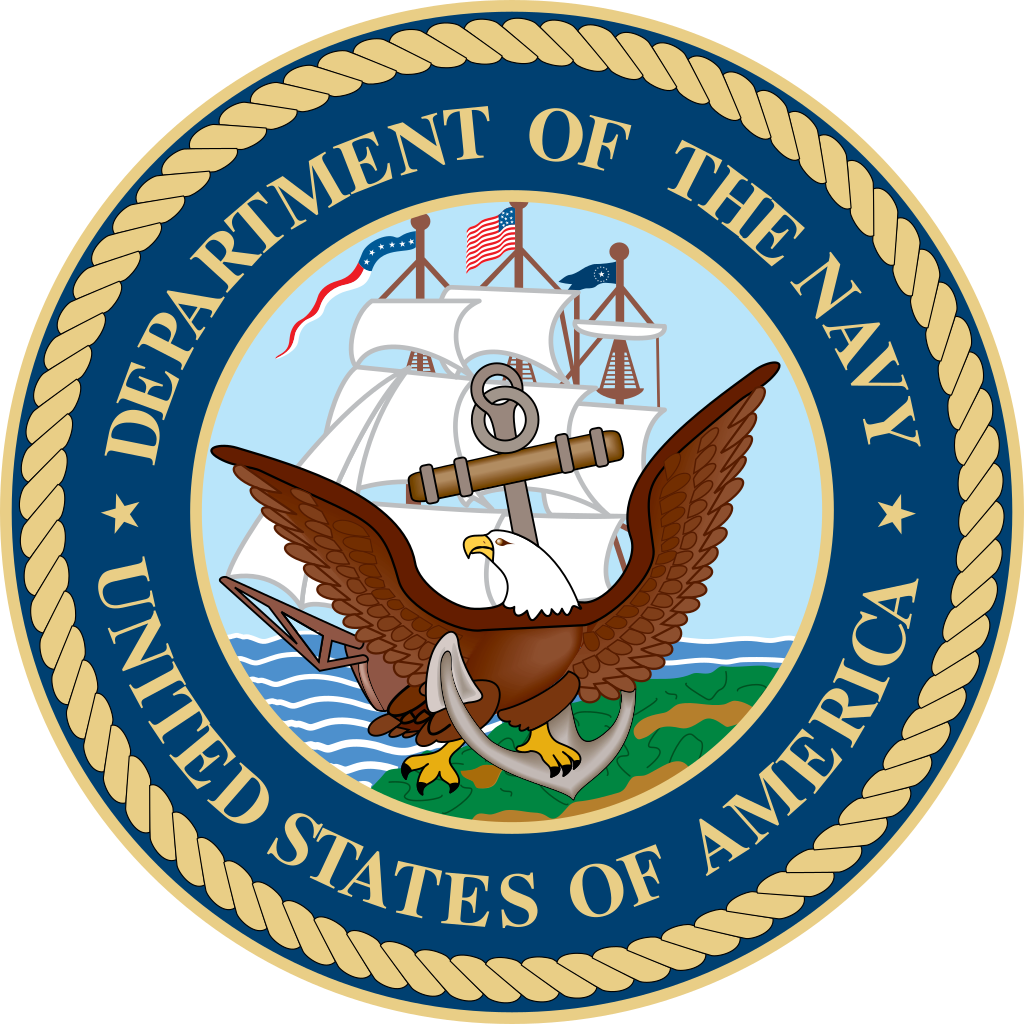
| 
NAVY DEPLOYMENT | 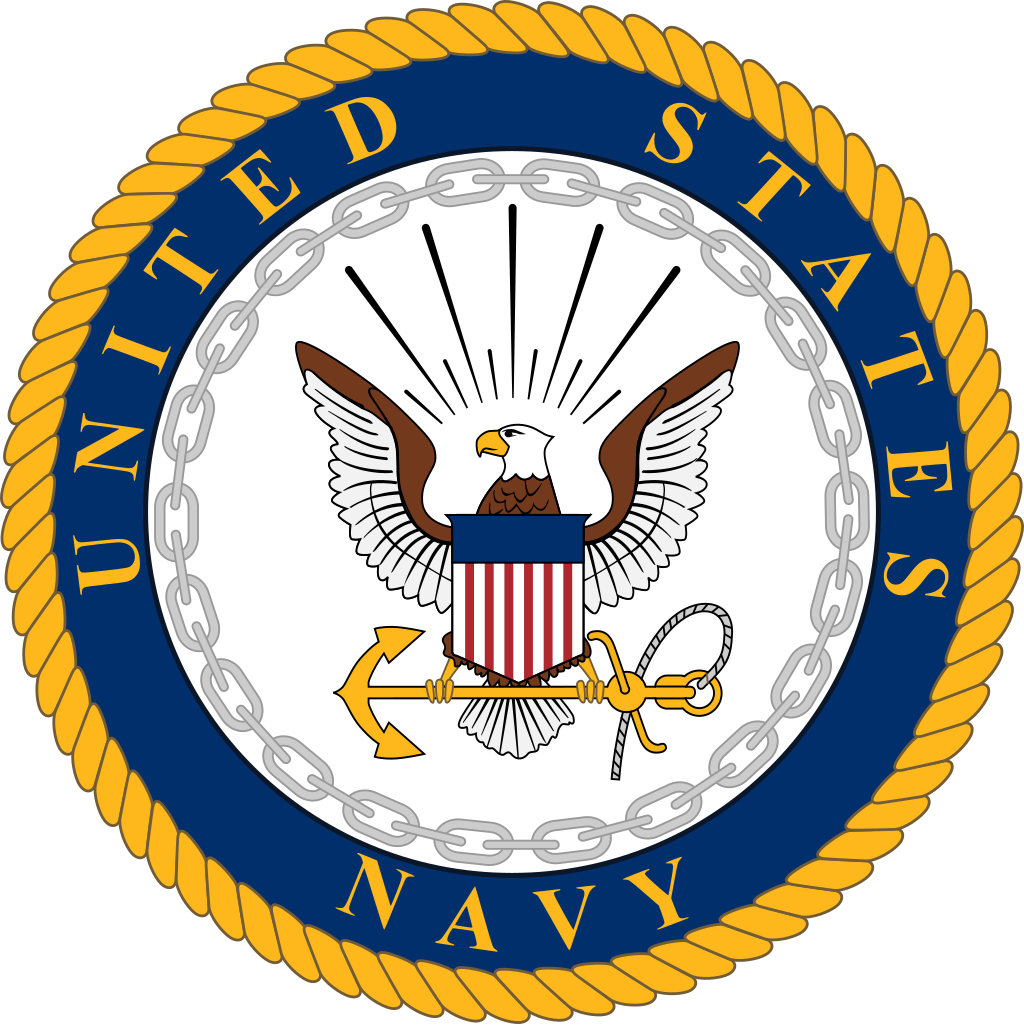
|
|
SECOND FLEET HEADQUARTERS
Vice Admiral Noah Irving
Vice Admiral Noah Irving
| Order of Battle | Personnel | Garrison |
| Second Fleet HQ Support Unit | 250 Personnel | Naval Support Activity Hampton Roads, Virginia |
| Naval Intelligence | 150 Personnel | Naval Support Activity Hampton Roads, Virginia |
TASK FORCE 101
Vice Admiral Noah Irving
Vice Admiral Noah Irving
| SHIP CLASS | VESSEL | COMPLIMENT | HOME PORT |
| Nimitz-class Aircraft Carrier | USS Nimitz* | Total: 6012 / Compliment: 3532 / Pilots: 250 / Support: 2,230 | Naval Support Activity Hampton Roads, Virginia |
| Enterprise-class Aircraft Carrier | USS Enterprise | Total: 5800 / Compliment: 3000 / Pilots: 250 / Support: 1,550 | Naval Support Activity Hampton Roads, Virginia |
| Ticonderoga-class Guided Missile Cruiser | USS Ticonderoga | 330 | Naval Support Activity Hampton Roads, Virginia |
| Ticonderoga-class Guided Missile Cruiser | USS Yorktown | 330 | Naval Support Activity Hampton Roads, Virginia |
| Ticonderoga-class Guided Missile Cruiser | USS Vincennes | 330 | Naval Support Activity Hampton Roads, Virginia |
| Ticonderoga-class Guided Missile Cruiser | USS Valley Forge | 330 | Naval Support Activity Hampton Roads, Virginia |
| Arleigh Burke-class Guided Missile Destroyer | USS Arleigh Burke | 303 | Naval Support Activity Hampton Roads, Virginia |
| Arleigh Burke-class Guided Missile Destroyer | USS Barry | 303 | Naval Support Activity Hampton Roads, Virginia |
| Arleigh Burke-class Guided Missile Destroyer | USS John Paul Jones | 303 | Naval Support Activity Hampton Roads, Virginia |
| Arleigh Burke-class Guided Missile Destroyer | USS Jeff Sessions | Total: 323 / Compliment: 319 / Pilots: 4 | Naval Support Activity Hampton Roads, Virginia |
| Arleigh Burke-class Guided Missile Destroyer | USS Richard Shelby | Total: 323 / Compliment: 319 / Pilots: 4 | Naval Support Activity Hampton Roads, Virginia |
| Arleigh Burke-class Guided Missile Destroyer | USS Ted Stevens | Total: 323 / Compliment: 319 / Pilots: 4 | Naval Support Activity Hampton Roads, Virginia |
| Arleigh Burke-class Guided Missile Destroyer | USS Frank Murkowski | Total: 323 / Compliment: 319 / Pilots: 4 | Naval Support Activity Hampton Roads, Virginia |
| Arleigh Burke-class Guided Missile Destroyer | USS John S. McCain | Total: 323 / Compliment: 319 / Pilots: 4 | Naval Support Activity Hampton Roads, Virginia |
| Arleigh Burke-class Guided Missile Destroyer | USS Jon Kyl | Total: 323 / Compliment: 319 / Pilots: 4 | Naval Support Activity Hampton Roads, Virginia |
| Arleigh Burke-class Guided Missile Destroyer | USS Ben N. Campbell | Total: 323 / Compliment: 319 / Pilots: 4 | Naval Support Activity Hampton Roads, Virginia |
| Spruance-class Destroyer | USS Spruance | Total: 334 / Compliment: 330 / Pilots: 4 | Naval Support Activity Hampton Roads, Virginia |
| Spruance-class Destroyer | USS Paul F. Foster | Total: 334 / Compliment: 330 / Pilots: 4 | Naval Support Activity Hampton Roads, Virginia |
| Spruance-class Destroyer | USS Kinkaid | Total: 334 / Compliment: 330 / Pilots: 4 | Naval Support Activity Hampton Roads, Virginia |
| Spruance-class Destroyer | USS Hewitt | Total: 334 / Compliment: 330 / Pilots: 4 | Naval Support Activity Hampton Roads, Virginia |
| Spruance-class Destroyer | USS Elliot | Total: 334 / Compliment: 330 / Pilots: 4 | Naval Support Activity Hampton Roads, Virginia |
| Spruance-class Destroyer | USS Arthur W. Radford | Total: 334 / Compliment: 330 / Pilots: 4 | Naval Support Activity Hampton Roads, Virginia |
| Los Angeles-class Submarine | USS San Juan | 110 | Naval Support Activity Hampton Roads, Virginia |
| Los Angeles-class Submarine | USS Pasadena | 110 | Naval Support Activity Hampton Roads, Virginia |
| Los Angeles-class Submarine | USS Albany | 110 | Naval Support Activity Hampton Roads, Virginia |
| Los Angeles-class Submarine | USS Topeka | 110 | Naval Support Activity Hampton Roads, Virginia |
| Los Angeles-class Submarine | USS Miami | 110 | Naval Support Activity Hampton Roads, Virginia |
| Los Angeles-class Submarine | USS Scranton | 110 | Naval Support Activity Hampton Roads, Virginia |
| Supply-class Support Ship | USNS Supply | Total: 214 / Compliment: 206 / Pilots: 8 | Naval Support Activity Hampton Roads, Virginia |
| Supply-class Support Ship | USNS Rainer | Total: 214 / Compliment: 206 / Pilots: 8 | Naval Support Activity Hampton Roads, Virginia |
| Supply-class Support Ship | USNS Bridge | Total: 214 / Compliment: 206 / Pilots: 8 | Naval Support Activity Hampton Roads, Virginia |
| Henry J. Kaiser-class Replenishment Oiler | USNS Henry J. Kaiser | 129 | Naval Support Activity Hampton Roads, Virginia |
| Henry J. Kaiser-class Replenishment Oiler | USNS Joshua Humphreys | 129 | Naval Support Activity Hampton Roads, Virginia |
| Henry J. Kaiser-class Replenishment Oiler | USNS Walter S. Diehl | 129 | Naval Support Activity Hampton Roads, Virginia |
TASK FORCE 3
Captain Roy Raleigh
Captain Roy Raleigh
| SHIP CLASS | VESSEL | COMPLIMENT | HOME PORT |
| Virginia-class Submarine | USS Virginia | 135 | Naval Support Activity Hampton Roads, Virginia |
| Virginia-class Submarine | USS Texas | 135 | Naval Support Activity Hampton Roads, Virginia |
| Virginia-class Submarine | USS Hawaii | 135 | Naval Support Activity Hampton Roads, Virginia |
| Virginia-class Submarine | USS North Carolina | 135 | Naval Support Activity Hampton Roads, Virginia |
TASK FORCE 9
Captain Daniel Majors
Captain Daniel Majors
| Sejong the Great-class Destroyer | USS Tim Hutchinson | 300 | Naval Support Activity Hampton Roads, Virginia |
| Sejong the Great-class Destroyer | USS Dale Bumpers | 300 | Naval Support Activity Hampton Roads, Virginia |
| Sejong the Great-class Destroyer | USS Dianne Feinstein | 300 | Naval Support Activity Hampton Roads, Virginia |
| Sejong the Great-class Destroyer | USS Barbara Boxer | 300 | Naval Support Activity Hampton Roads, Virginia |
| Sejong the Great-class Destroyer | USS Wayne Allard | 300 | Naval Support Activity Hampton Roads, Virginia |
DETAILS
Nimitz-class - Fully Fueled; Aviation reserves fully fueled; Non-perishable food/water for 3 month journey; Standard armaments including: x3 NATO Sea Sparrow Launchers (x8 RIM-7 Sea Sparrow loaded in each); x4 Phalanx CIWS; x2 RAM launchers (x21 missiles); Standard countermasures/decoys; Onboard: x500 M4A1 Carbine and associated ammo and x500 M1911 and associated ammo in barracks;
Aircraft: x70 Boeing F/A-18E/F Super Hornet and all of their necessary armaments and equipment; x5 EA-16G-Growler; x8 MH-60S; x5 Northrop Grumman E-2C Hawkeye; x2 C-25 Greyhound;
Enterprise-class - Fully Fueled; Aviation reserves fully fueled; Non-perishable food/water for 3 month journey; Standard armaments including: x3 NATO Sea Sparrow Launchers (x8 RIM-7 Sea Sparrow loaded in each); x3 Phalanx CIWS; x2 RAM launchers (x21 missiles); Standard countermasures/decoys; Onboard: x500 M4A1 Carbine and associated ammo and x500 M1911 and associated ammo in barracks;
Aircraft: x70 Boeing F/A-18E/F Super Hornet and all of their necessary armaments and equipment; x5 EA-16G-Growler; x8 MH-60S; x5 Northrop Grumman E-2C Hawkeye; x2 C-25 Greyhound;
Ticonderoga-class - Fully Fueled; Non-perishable food/water for 3 month journey; x8 RGM-84 Harpoon missiles; x2 5 in 62 caliber Mark 45 Mod 4 lightweight gun; x2 25 mm (0.98 in) Mk 38 gun; x4 .50 in (12.7 mm) cal. machine gun; x2 Phalanx CIWS Block 1B; x2 Mk 32 12.75 in (324 mm) triple torpedo tubes (standard reserve of Mk 54 torpedoes); Onboard: x30 M4A1 Carbine and associated ammo and x30 M1911 and associated ammo in barracks;
x2 61 cell Mk 41 vertical launch systems containing: x20 RUM-139C (Mrk 54 Torpedo); x200 (Quad packed) RIM-162A ESSM; x40 RIM-161B (SM-3 block IA); x12 RGM/UGM-109E Tomahawk Land Attack Missile; Standard countermeasures/decoys;
Countermeasures/decoys: Mark 36 SRBOC; AN/SLQ-25 Nixie;
Aircraft: x2 Sikorsky MH-60S.
Arleigh Burke-class (Flight II) - Fully Fueled; Non-perishable food/water for 3 month journey; x1 5-inch (127 mm)/62 Mk. 45 Mod 4 (lightweight gun); x2 20 mm Phalanx CIWS; x2 25 mm M242 Bushmaster chain gun; x2 Mk 141 Harpoon Anti-Ship Missile Launcher; x2 Mark 32 triple torpedo tubes: x1 per tube + full standard storage of Mark 54 torpedoes on ship; Onboard: x30 M4A1 Carbine and associated ammo and x30 M1911 and associated ammo in barracks;
90-cell Mk 41 VLS: x4 RUM-139C (Mrk 54 Torpedo); x100 (Quad packed) RIM-162A ESSM; x10 RIM-161B (SM-3 block IA); x51 RGM/UGM-109E Tomahawk Land Attack Missile;
Countermeasures/decoys: AN/SLQ-32(V)2 Electronic Warfare System; AN/SLQ-25 Nixie Torpedo Countermeasures; MK 36 MOD 12 Decoy Launching System; MK 53 Nulka Decoy Launching System; AN/SLQ-39 CHAFF Buoys.
Arleigh Burke-class (Flight IIA) - Fully Fueled; Non-perishable food/water for 3 month journey; x1 5-inch (127 mm)/62 Mk. 45 Mod 4 (lightweight gun); x2 20 mm Phalanx CIWS; x2 25 mm M242 Bushmaster chain gun; x2 Mk 141 Harpoon Anti-Ship Missile Launcher; x2 Mark 32 triple torpedo tubes: x1 per tube + full standard storage of Mark 54 torpedoes on ship; Onboard: x30 M4A1 Carbine and associated ammo and x30 M1911 and associated ammo in barracks.
96-cell Mk 41 VLS: x4 RUM-139C (Mrk 54 Torpedo); x100 (Quad packed) RIM-162A ESSM; x10 RIM-161B (SM-3 block IA); x57 RGM/UGM-109E Tomahawk Land Attack Missile;
Countermeasures/decoys: AN/SLQ-32(V)2 Electronic Warfare System; AN/SLQ-25 Nixie Torpedo Countermeasures; MK 36 MOD 12 Decoy Launching System; MK 53 Nulka Decoy Launching System; AN/SLQ-39 CHAFF Buoys;
Aircraft: x2 Sikorsky MH-60S.
Sejong The Great-class - Fully Fueled; Non-perishable food/water for 3 month journey; x1 5-inch (127 mm)/62 Mk. 45 Mod 4 (lightweight gun); x1 20 mm Phalanx CIWS; x16 SSM-700K Haeseong Anti-ship Missiles; x2 triple torpedo tubes for K745 Blue Shark torpedo with full storage of them; x1 80-cell Mk 41 VLS: x80 RIM-161 Standard Missile 3 (SM-3 Block IA).
Spruance-class - Fully Fueled; Non-perishable food/water for 3 month journey; x2 5 in 54 caliber Mark 45 dual purpose guns; x2 20 mm Phalanx CIWS Mark 15 guns; x1 8 cell NATO Sea Sparrow Mark 29 missile launcher; x2 quadruple Harpoon missile canisters; x2 Mark 32 triple 12.75 in torpedo tubes (standard reserve of Mk 46 torpedoes); x1 21 cell RIM-116 Rolling Airframe Missile; Onboard: x30 M4A1 Carbine and associated ammo and x30 M1911 and associated ammo in barracks;
x1 61 cell Mk 41 VLS: x61 RGM/UGM-109E Tomahawk Land Attack Missile;
Aircraft: x2 Sikorsky MH-60S.
Virginia-class - Fully Fueled; x135 crew; Crew fully rested and x3 pairs of uniforms each; Non-perishable food for 3 month journey; All necessary maps (terranean and deep-sea topographic maps) and other necessary standard on-board equipment, material, and supplies; x30 Beretta M9 and x90 fully loaded Beretta M9 magazines (located behind lock and key in on-board barracks); x12 VLS tubes: x12 Tomahawk BGM-109 missiles; x4 533 mm torpedo tubes: x16 Mk-48 torpedoes, x9 UGM-84 Harpoon missiles; Full load of Acoustic Device Countermeasure Mk 3/4; All sonars.
Los Angeles-class - Fully Fueled; Non-perishable food/water for 3 month journey; x12 VLS tubes + x12 RGM/UGM-109E Tomahawk Land Attack Missile, x4 533 mm torpedo tubes + 13 Mk-48 torpedoes; Onboard: x30 M4A1 Carbine and associated ammo and x30 M1911 and associated ammo in barracks.
Supply-class - Fully Fueled; Fully-stocked with non-perishable food/water for 6 month journey of the entire fleet (on top of the resources the respective ships already have); complete storage of usable fuel for aforementioned vessels; complete storage of aviation fuel for aforementioned aircraft; x2 Sikorsky MH-60S; Onboard: x100 M4A1 Carbine and associated ammo and x100 M1911 and associated ammo in barracks.
Henry J. Kaiser-class Replenishment Oiler - Fully Fueled; Fully-stocked with non-perishable food/water for 6 month journey; complete storage of usable fuel for all conventionally-powered vessels for 6 month journey; complete storage of aviation fuel for all aircraft in the fleet for 6 month deployment; Onboard: x30 M4A1 Carbine and associated ammo and x30 M1911 and associated ammo in barracks.
|
|

| 
DEPLOYMENT ORDERS | 
|
|
CONTEXT
The situation concerning Turkey, Israel, and the members of the United Coalition had become impossible to ignore. Inaction was simply no longer considered a viable option by the White House or the Pentagon. The President called a special joint session of Congress in Washington to address the situation in Turkey. However, until Congress voted on whether or not to declare war, the United States would not be able to move the massive amounts of ships, vehicles, equipment, and military personnel necessary to properly respond to the Turkish threat. However, a more limited relocation of Air Force equipment and personnel would be doable and within the budget allocated to the Defense Department by Congress to allow for military exercises and deployments to Europe and the United Kingdom. In order to directly assist the British with the protection of their sovereign bases in Cyprus, the President ordered the Air Force to send a variety of aircraft to England and Cyprus.
EUROPEAN THEATER
The command "U.S. Air Forces in Europe" (USAFE) was created and, along with 150 Airmen for headquarters support personnel, were put under the command of Lieutenant General Alvin Daniels. Daniels and his team would first need to fly to their new operating headquarters, RAF Mildenhall in the United Kingdom. Two C-40 Clippers were mobilized from Ellington Air Force Base in Texas with the aforementioned crews and precautions; all necessary pre-flight checks were taken. They were appropriately fueled to fly to Hanscom Air Force Base in Boston where they would split the new 151-man team in charge of running Europe's Air Force command center. All of the personnel and their belonging were loaded onto the two aircraft. The two C-40s were properly fueled for the flight to RAF Mildenhall from Hanscom AFB. The C-40s took the most direct route to RAF Mildenhall (without incurring on Canadian or Irish airspace). The aircraft flew at the appropriate speed and altitude to ensure that they would make it to the United Kingdom without incident. The aircraft would securely request permission to enter British airspace and then request permission to land at RAF Mildenhall. Once both of the aircraft had safely landed, the passengers would deplane and head to the American facilities located at RAF Mildenhall where they would set up the United States's European Headquarters. Meanwhile, the pilots of the C-40s would take a five hour rest period where they were able to replenish themselves, sleep, and enjoy recreation. Then, they took the same route back to the United States, with the appropriate amount of fuel and flying at the appropriate altitude and speed, to make it back to Hanscom Air Force Base in Boston where they would then refuel and return to Ellington AFB.
TRANSIT
EL>EM>FN ::: FN>GN>GO>HO>IO ::: IO>HO>GO>GN>FN
Next the 6th and 15th Fighter Squadrons would mobilize and deploy (as described above under "Details") from Hill AFB and Holloman AFB respectively. They would fly at the appropriate height and altitude to make it to Hanscom AFB in Massachusetts. The fighters would land at Hanscom AFB and temporarily park at the airbase. The pilots would be allowed two hours of rest time before the fighters were again fully fueled (and all other precautions as described under "Details"). The jets would depart from Hanscom AFB and fly to RAF St Mawgan in the most direct path without incurring on Canadian or Irish airspace. The jets would request, one at a time, to enter British airspace and land at RAF St Mawgan and would do so in the proper manner. From there they would refuel with the appropriate amount of fuel to make it to RAF Akrotiri (within the context of the route about to be described). The fighters would deploy from RAF St Mawgan and fly in formations of four at the appropriate speed and altitude to make it to RAF Akrotiri taking the following route: from Cornwall to the Northwestern coast of Spain, down along the coast of Portugal, through the Strait of Gibraltar, south of the Island of Sardinia, between Sicily and Malta, south of Crete, and to RAF Akrotiri where they would request permission to enter British airspace, land, and park in the proper designated places to be out of the way. All of this would be securely transmitted to USAFE.
TRANSIT
(6th) DN>EN>FN
(15th) FM>FN
(Both) FN>GN>GO>HO>IO ::: IO>IN>IM>JM>KM
Next, the 8th and 9th Fighter Squadrons would mobilize and deploy (as described above under "Details") from Mountain AFB and Seymour Johnson AFB respectively. They would fly at the appropriate height and altitude to make it to Hanscom AFB in Massachusetts. The fighters would land at Hanscom AFB and temporarily park at the airbase. The pilots would be allowed two hours of rest time before the fighters were again fully fueled (and all other precautions as described under "Details"). The Department of Defense would securely request that the Canadian Department of National Defense allow 48 U.S. Air Force F-15E Strike Eagles to land and refuel at Canadian Forces Base Gander, before departing to the United Kingdom. The Canadians would be assured that the aircraft were not armed with any weaponry, and simply had their long-range tanks attached to the aircraft (this was, of course, true). They would be further told that this relocation maneuver was to assist with the United Coalition in the Turkish situation. If the Canadians did not object, the 8th and 9th Fighter Squadrons would deploy from Hanscom AFB with the appropriate amount of fuel, one at a time, and fly in formations of four to CFB Gander in Newfoundland. They would request permission to enter Canadian airspace and land, and would do so in the proper way. They would then fully refuel. As the fighters fully refueled, they would depart on flights of four and fly to RAF St Mawgan in the most direct path without entering Irish airspace. They would fly at the appropriate altitude and speed to get there safely. They would then request permission to enter British airspace and to land at RAF St Mawgan where they would refuel with the appropriate amount of fuel to make it to RAF Mildenhall. They would again depart in flights of four, at the appropriate speed and altitude, in order to safely make it to RAF Mildenhall where they would safely land and park in the appropriate place designated by the British in order to be out of the way. The pilots would then go rest and relax at RAF Mildenhall, in the American quarter.
TRANSIT
(8th) DN>EN>FN
(9thth) GM>EM>EN>FN
(Both) FN>GN>GO>HO>IO ::: IO>JO
Next, the 1st Reconnaissance Flight (at part of the 1st Reconnaissance Squadron) would mobilize and deploy (as described above under "Details") from Homey Airport in Nevada. The Canadians would again be securely contacted and request to allow three "United States Reconnaissance Aircraft" permission to land at CFB Gander in Newfoundland. The Canadians would be told that these aircraft were also going to be used to assist the members of the United Coalition - it would be specified that this was a sensitive and Top Secret deployment. If the Canadians did not object, the aircraft would depart Homey Airport and fly at the appropriate altitude and speed to make it to CFB Gander in Newfoundland - they would depart so that they made it to CFB Gander at 10:05 at night. They would request to enter Canadian airspace, land, and taxi so that they could refuel. Once each aircraft refueled, they would request permission to take off and would leave to fly directly to Gibraltar Airport - they would leave so that when they arrived at Gibraltar, it would be around 3 in the morning. They would take this route without entering the airspace of any country besides Canada and the United Kingdom. They would request permission to land at Gibraltar Airport, quickly refuel, and then depart for RAF Akrotiri taking the same route (from where they were) as the 6th and 15th Fighter Squadrons. They would then request permission to land at RAF Akrotiri and would park their aircraft in the most discrete, isolated place allowed. Each of the aircraft would have their fuel removed and would be covered by large tarps to match the color of the ground around them. Then, the pilots would be allowed to relax, get in some recreation with other Americans there, and rest.
TRANSIT
DM>EN>FN>GN ::: GN>HN>HM>IM ::: IM>JM>KM
Next, the 1st Air Mobility Squadron would mobilize and deploy (as described above under "Details") from Dover AFB. One of the three C-5B Galaxys would be fueled to fly to McGuire AFB at the appropriate altitude and height so that it could properly land at the airbase. From there, the equipment and materials of the 9th Missile Defense Element would be loaded onboard and secured. Then, the aircraft would be properly fueled so that it could make it to RAF St Mawgan in the United Kingdom. A secure request from the Department of Defense would be sent to the Canadians to permit four American C-5B Galaxy transport aircraft to fly over Newfoundland and Nova Scotia. The Canadians would be told that these aircraft were being used to transport materials for use by the coalition. If the Canadians did not object, the aircraft would take off from McGuire AFB in New Jersey and fly in the most direct path to RAF St Mawgan; it would fly at the appropriate altitude and speed so that it would safely make it to its destination. After requesting permission to land at RAF St Mawgan, it would refuel and request permission to take off again. The aircraft would have enough fuel to make it from England to its new destination of RAF Akrotiri. The aircraft would take the same route as the 6th and 15th Fighter Squadrons, and would fly at the appropriate altitude and speed so that it could safely make it to its destination. Once the aircraft landed at RAF Akrotiri, its contents would be unloaded and the 9th Missile Defense Element's system would be assembled in an appropriate place on the premises of RAF Akrotiri.
The other three C-5B Galaxys would fly from Dover AFB, properly fueled for the journey at the appropriate altitude and speed, to El Paso International Airport in Texas. They would land and the equipment and supplies of the 11th Missile Defense Element would be loaded onto two of the Galaxys (with one of them having most of the equipment and vehicles and firing systems) - the aforementioned equipment and weapons and vehicles had been brought to the airport by U.S. Army soldiers and personnel in the middle of the night. The three aircraft were then properly fueled so that they could safely make it to Killeen-Fort Hood Regional Airport. The aircraft flew at the appropriate altitude and speed so that they would safely make it from their destination. Like what they did in El Paso, the vehicles/weapons/equipment of the 12th Missile Defense Element were brought to the airport by U.S. Army and U.S. Air Force personnel where it was securely loaded onto two of the three C-5B Galaxys. None of the Galaxys would be cleared to take off if they were overweight. Everything would be properly secured for the flight. The aircraft would then be refueled so that they could make a flight to McGuire AFB in New Jersey. They would then fully refuel and take the exact same route as the first C-5B - and would take all of the same actions and precautions. They would then unload equipment at RAF Akrotiri where it would be strategically set up at the base (out of the way, but in proper position to be used if needed). The next day, the C-5Bs would refuel and be remained by their crew. They would fly back the same way whence they came, at the appropriate speed and altitude and with the correct amount of fuel, and would end up back at Dover AFB in the United States. Note: All of the missiles and weapons were not armed while in flight in the C-5B Galaxys, but once they were reassembled the weapons were again armed.
TRANSIT
(x1 C-5B) FM>FN>GN>GO>HO>IO ::: IO>IN>IM>JM>KM
(x3 C-5B) FM>EM>DM ::: DM>EM ::: EM>FM ::: FM>FN>GN>GO>HO>IO ::: IO>IN>IM>JM>KM
(All) KM>JM>IM>IN>IO ::: IO>HO>GO>GN>FN>FM
Next, the entirety of the 4th Air Mobility Squadron would be activated and mobilized. They would be properly fueled and all pre-flight checks would be done. The entirety of the 103rd Security Forces Squadron based at Ellington AFB would be loaded onto eight of the C-40s (a maximum of 70 Security Forces on each aircraft). The guns, ammunition, and supplies of the Security Forces would be loaded onto the C-40s including (per soldier): x1 M4 Carbine Assault Rifle and x7 loaded magazines, x1 M9 Semiautomatic Pistol and x5 loaded magazines, multiple combat unforms and recreation uniforms, a limited amount of personal items, x3 M67 Fragmentation Hand Grenades, and radios/telcom equipment. All of this, especially the grenades, would be carefully loaded onto the aircraft and secured so that they would be safe in flight - except all of the grenades would be loaded onto one of the C-40s, with no passengers, but also secured so that they would be safe in flight. They would be fully fueled and fly at the appropriate speed and altitude to ensure that they safely made it to Gibraltar Airport. They would request to land at Gibraltar Airport and, once landed and taxied, would refuel with the appropriate amount of fuel so that they could make it to RAF Akrotiri. Once they landed at RAF Akrotiri, the Security Forces soldiers would unload their equipment and weapons. After their first night, they would then take 8 hour shifts so that, at any given time, 183 Security Forces soldiers were guarding RAF Akrotiri while the others were sleeping, relaxing, or engaging in recreation. However, at any time, all of the Airmen could be called up. While on their shift, each soldier would be in their combat uniforms, armed with the aforementioned weapons and ammunition, and would patrol within and around the edges of the facility. The officers of the Security Forces would directly coordinate with the British how they wanted the patrols done (and where) in order to avoid causing a mishap. Meanwhile, the Airmen in the 9th, 11th, and 12th Missile Defense Elements would take public flights to Houston and then taxis to Ellington Air Force Base. The C-40s would all return home to Ellington AFB (the following day in order to allow the pilots to rest) in the same route they took to get there - with the appropriate fueling, altitude, speed, landings, and refueling as necessary on the same route. One of the C-40s, whose crew would be given a day to rest, would then refuel the aircraft, do all of the necessary pre-flight checks, and fly the personnel from the aforementioned Missile Defense Elements to RAF Akrotiri in the same way that it had gone the first time, with the same stops and precautions.
TRANSIT
EM>FM>FN>GN>HN>IM ::: IM>JM>KM ::: KM>JM>IM ::: IM>HN>GN>FN>FM>EM
For every stop in another country, or any time an American aircraft flew over the territory of another nation, that nation (i.e. the British and Canadians) would be given ample time to consider the request so that it wasn't a last minute decision. The British and Canadians were, in advance, given detailed flight plans of where everything would be going and what times they would be arriving (approximately) in a secure manner.
|
Last edited:



